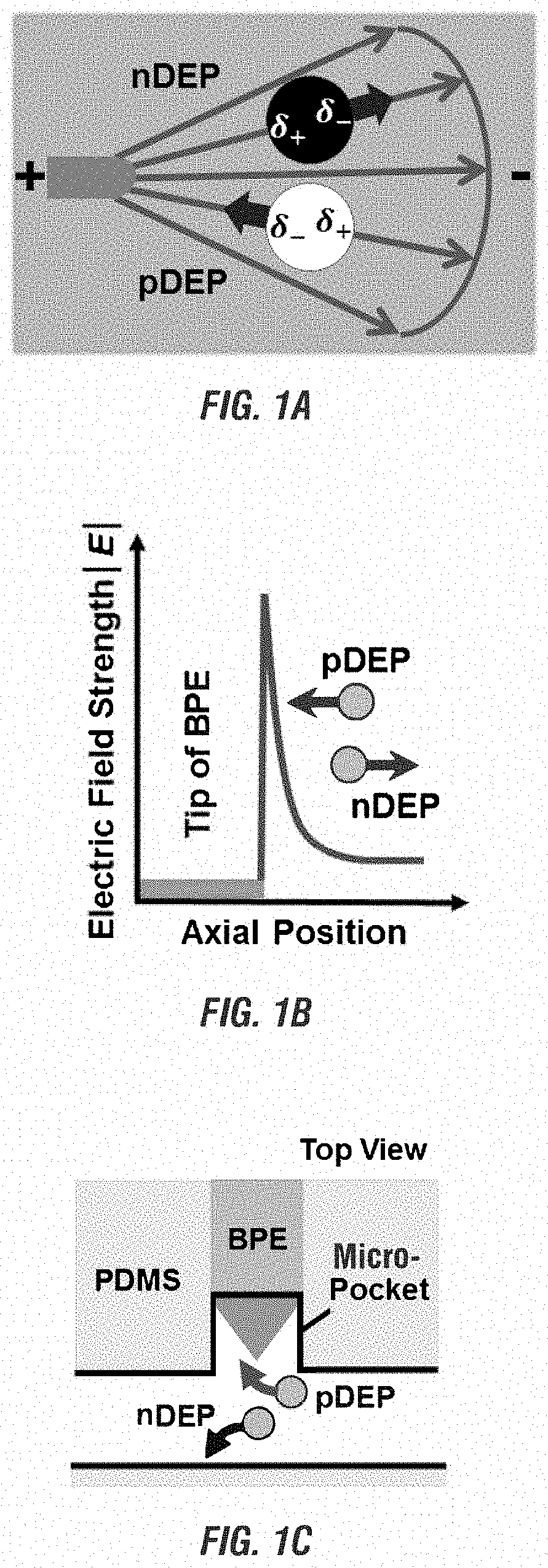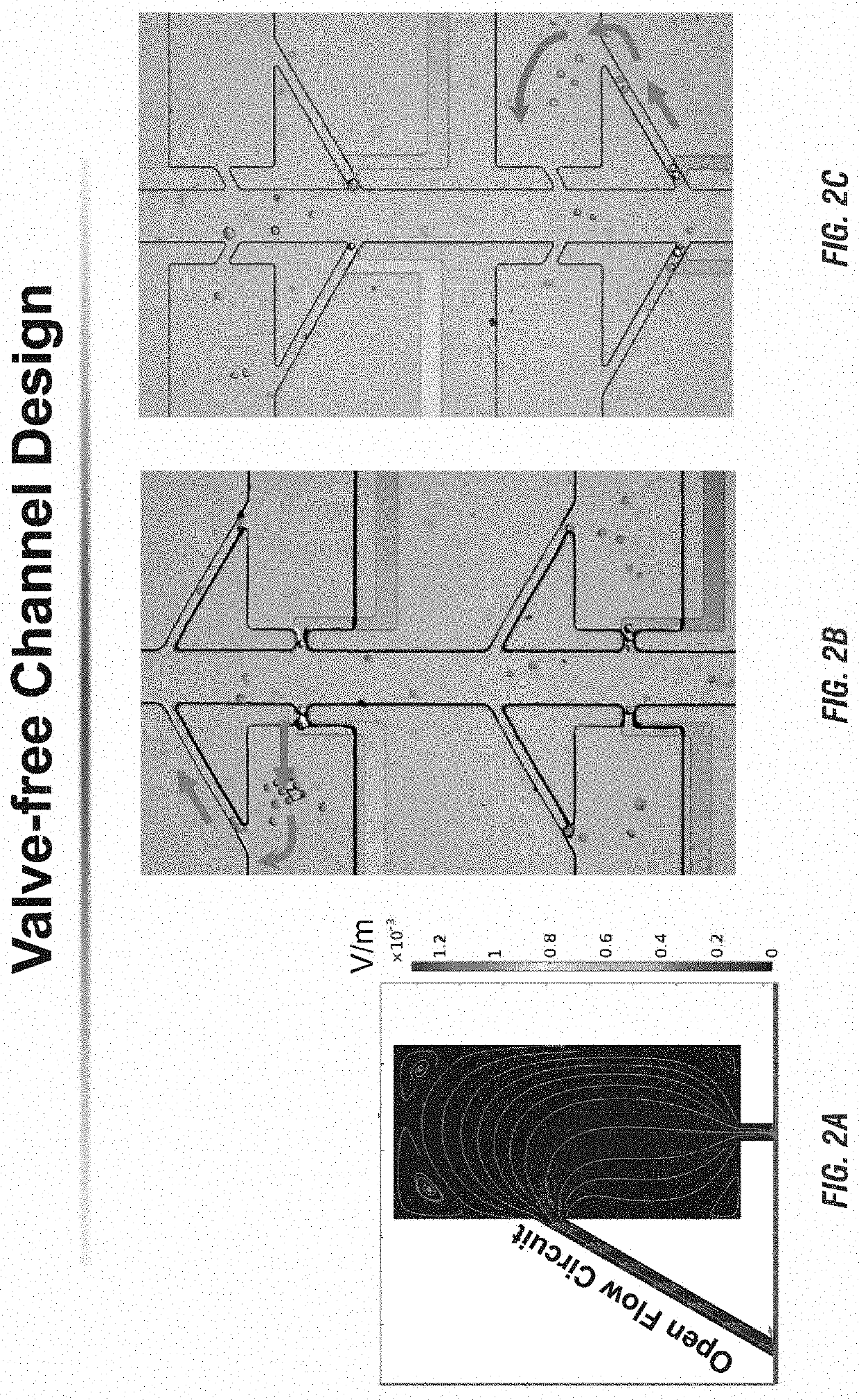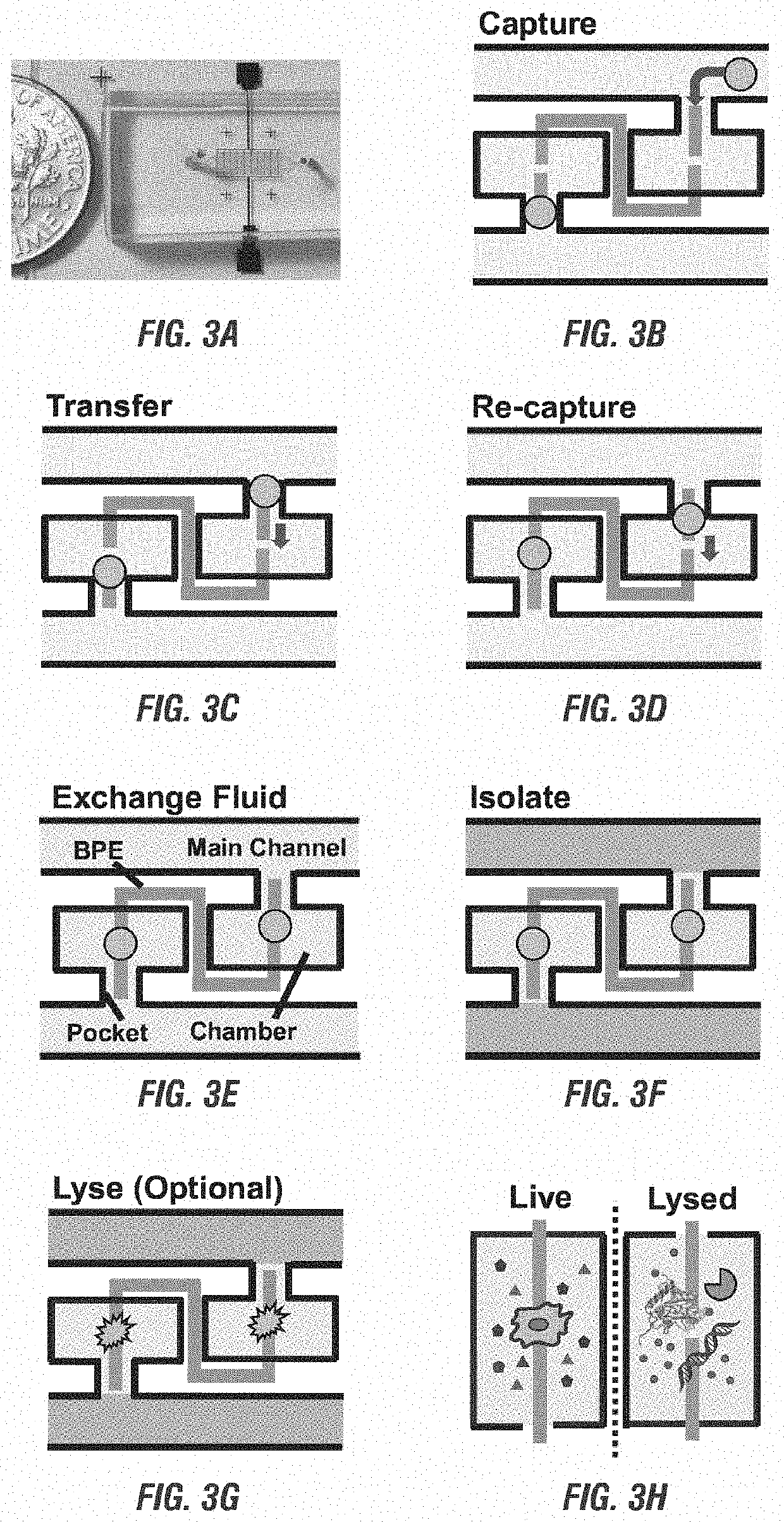Integrated selective capture, sequestration, fluidic isolation, electrical lysis and analysis of single cells
a selective capture and single cell technology, applied in the field of microfluidic devices, can solve the problems of mutated kras not being able to use this monotherapy, unable to reduce or eliminate ctcs after treatment, and difficult separation of ctcs from whole blood, the first inevitable step of overall analysis, etc., to achieve low cost, prevent assay crosstalk, and simplify fabrication
- Summary
- Abstract
- Description
- Claims
- Application Information
AI Technical Summary
Benefits of technology
Problems solved by technology
Method used
Image
Examples
example 1
[0175]Design of the cell assay units in the microfluidic devises disclosed herein In the existing microfluidic devices disclosed in U.S. patent application Ser. No. 15 / 793,587 for capturing single cells, cell-scale micropockets extruding from either side of microchannels ensure individual cells to be selectively captured at each BPE tip.
[0176]In the microfluidic devices disclosed herein, reaction chambers are introduced adjacent to the micropockets for isolation and store a necessary amount of reagent solution for single cell assay.
[0177]Transfer of each cell from a micropocket to its adjacent reaction chamber can be accomplished by increasing contact area between cells and reagents. FIG. 4A-FIG. 4D show the results of the cell transfer step in the absence of a leak channel. FIG. 4A shows a simulated contour plot for the flow velocity and streamlines of the device when a cell (represented by a white circle) is captured in the pocket. For this simulation, all pocket corners are fille...
example 2
Split BPE Design For Selective Recapturing and Retention of Individual Cells.
[0187]The leak channel design has successfully enabled capture and transfer of individual cells into reaction chambers. To integrate on-chip molecular analysis of single cells, the firm retention of isolated cells in the confined microstructures is crucial, especially in the case when fluid exchange is required. To address such demand, a split BPE design in which each single BPE employed previously was divided into two separate BPEs was developed as shown in FIG. 6A-FIG. 6F.
[0188]FIG. 6A-FIG. 6F show results of the cell re-capture step using split BPEs, time lapse images of cell capture, transfer, and recapture accomplished by only turning on and off the applied voltage. FIG. 6A shows cells flowing through channels when AC was off. FIG. 6B shows that turning on AC resulted in single-cell capture. FIG. 6C and FIG. 6D show that turning AC back off and then on enabled cell transfer and re-capture at the tips o...
example 3
[0193]After cells were re-captured at the split BPEs, electric lysis was performed by increasing the applied voltage. To ensure rapid and gentle lysis, 5 s was initially chosen, and a voltage were applied and increased gradually until all the cells were lysed. Prior to cell lysis, the fluid flow in the fluidic microchannels was stopped to observe the static lysis. FIG. 7A-FIG. 7J show the results of using split BPEs inside the reaction chamber and a higher voltage to optimize cell lysis.
[0194]FIG. 7A and FIG. 7C show the bright field images of the cells re-captured at split BPEs. FIG. 7B and FIG. 7D show the captured cells moved to the center of the split BPEs after the voltage were increased to 166 Vpp to initiate lysis for 1 second. FIG. 7E, and FIG. 7H show the fluorescent images of the captured single MDA-MB-231 cells (green). FIG. 7F and FIG. 7I show the fluorescent images after the lysis of the captured single MDA-MB-231 cells after AC field application fo...
PUM
 Login to View More
Login to View More Abstract
Description
Claims
Application Information
 Login to View More
Login to View More - R&D
- Intellectual Property
- Life Sciences
- Materials
- Tech Scout
- Unparalleled Data Quality
- Higher Quality Content
- 60% Fewer Hallucinations
Browse by: Latest US Patents, China's latest patents, Technical Efficacy Thesaurus, Application Domain, Technology Topic, Popular Technical Reports.
© 2025 PatSnap. All rights reserved.Legal|Privacy policy|Modern Slavery Act Transparency Statement|Sitemap|About US| Contact US: help@patsnap.com



